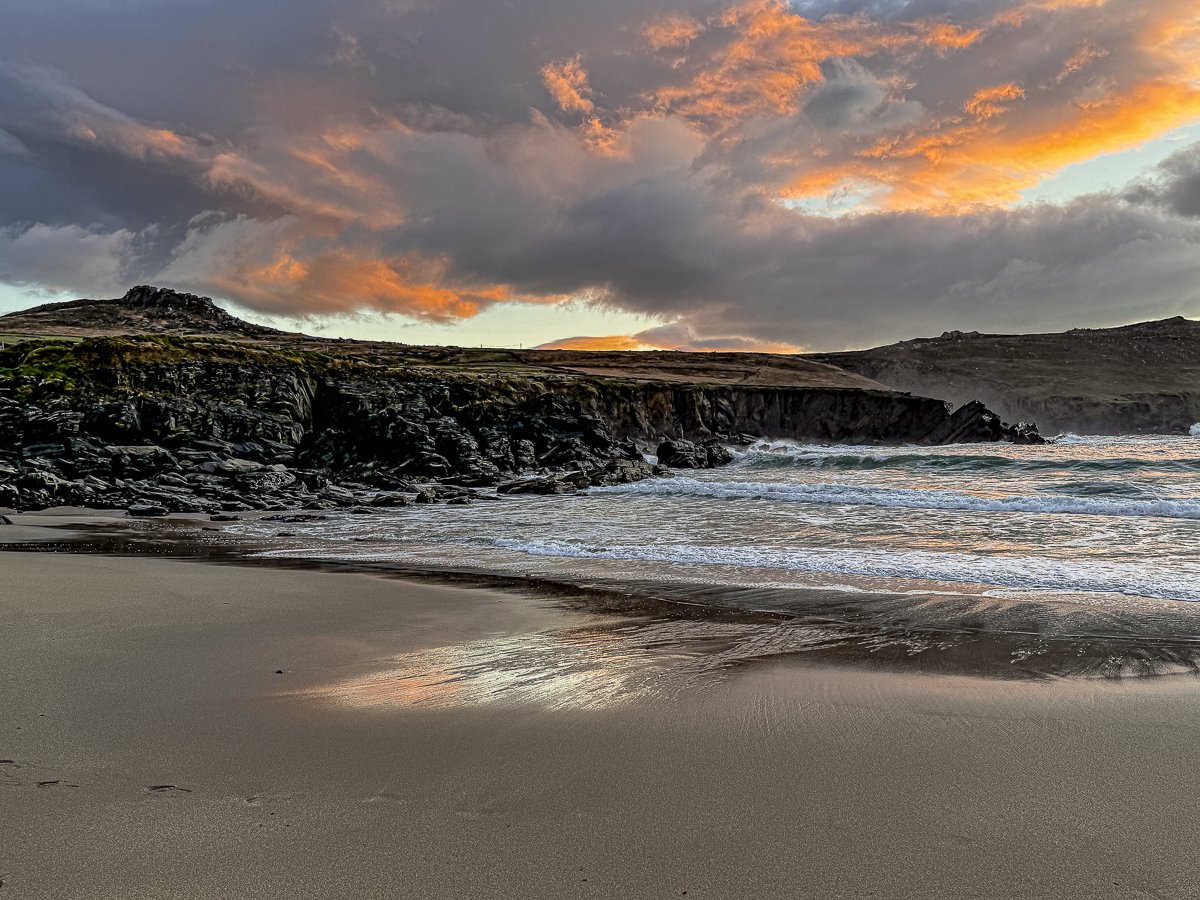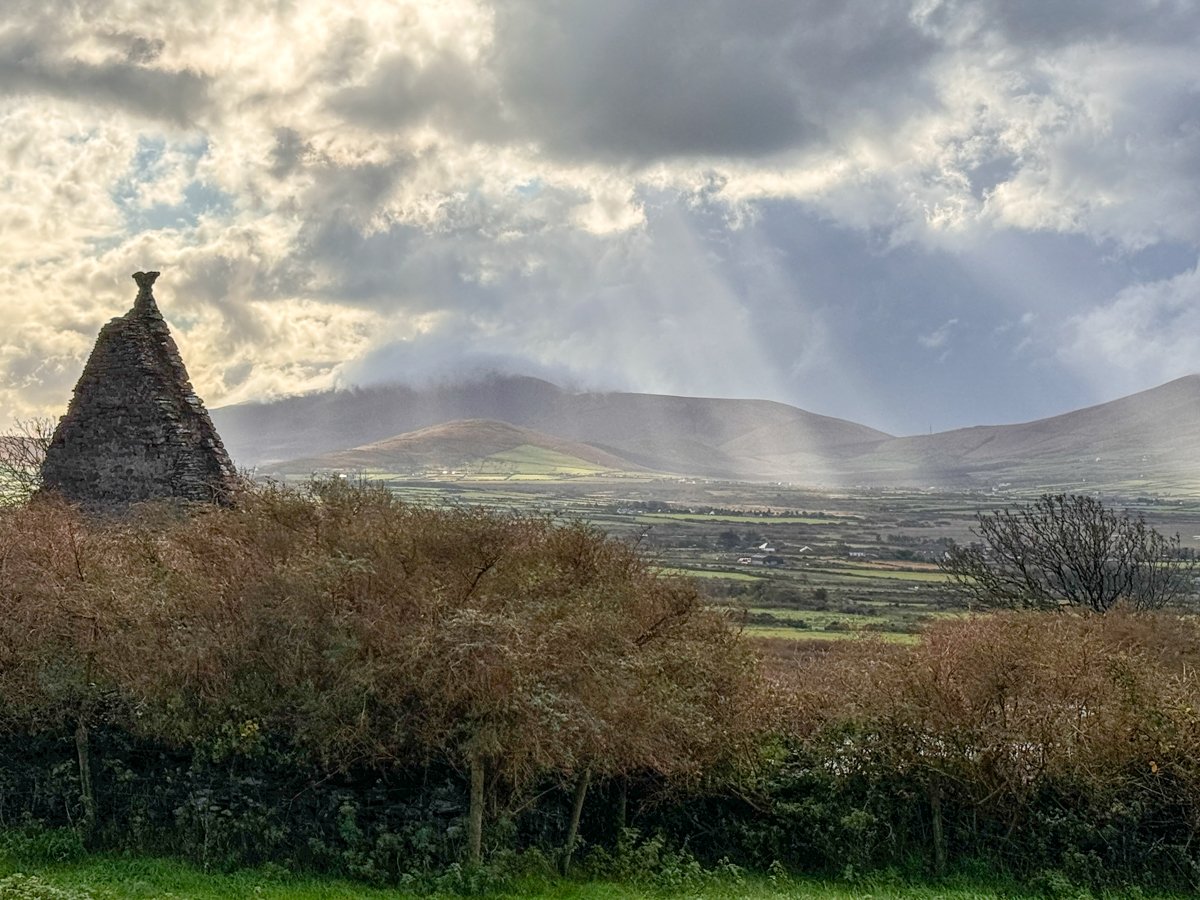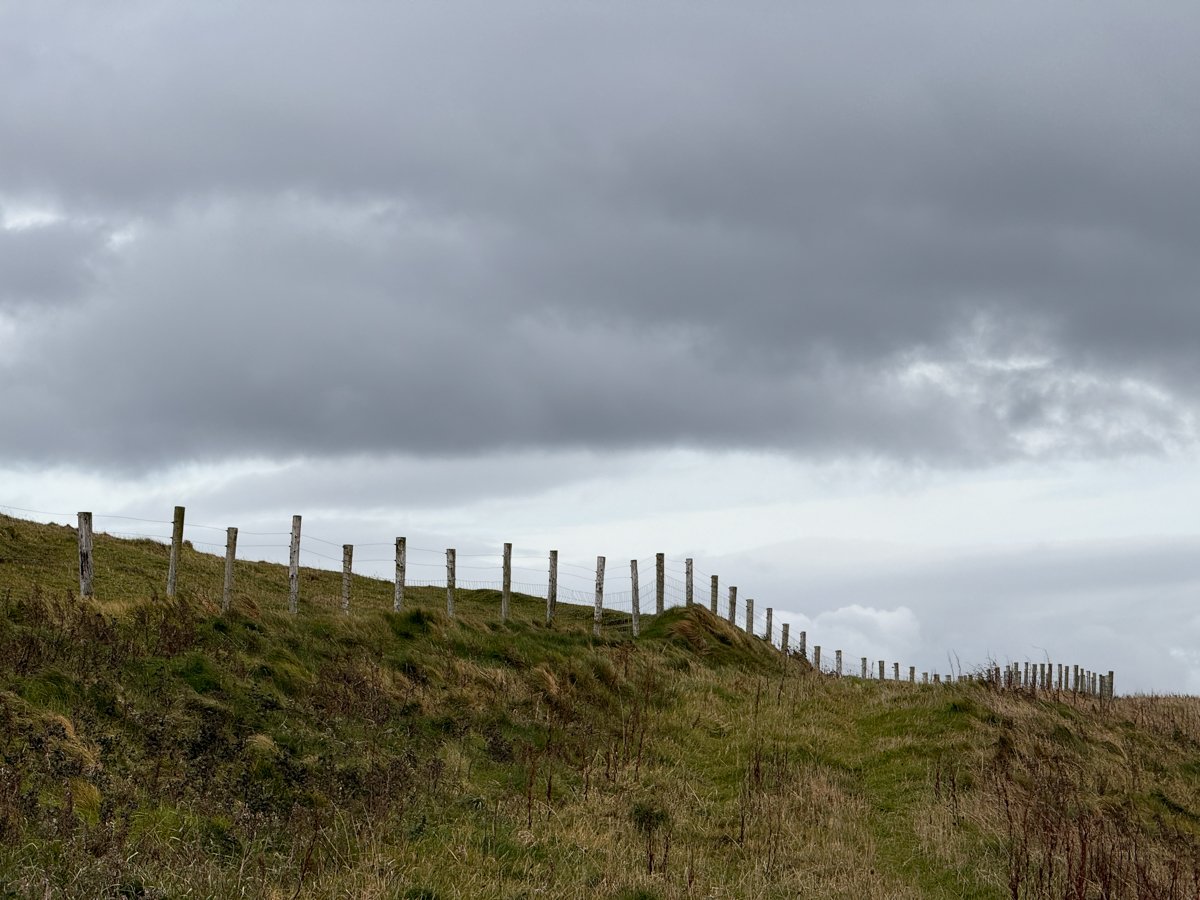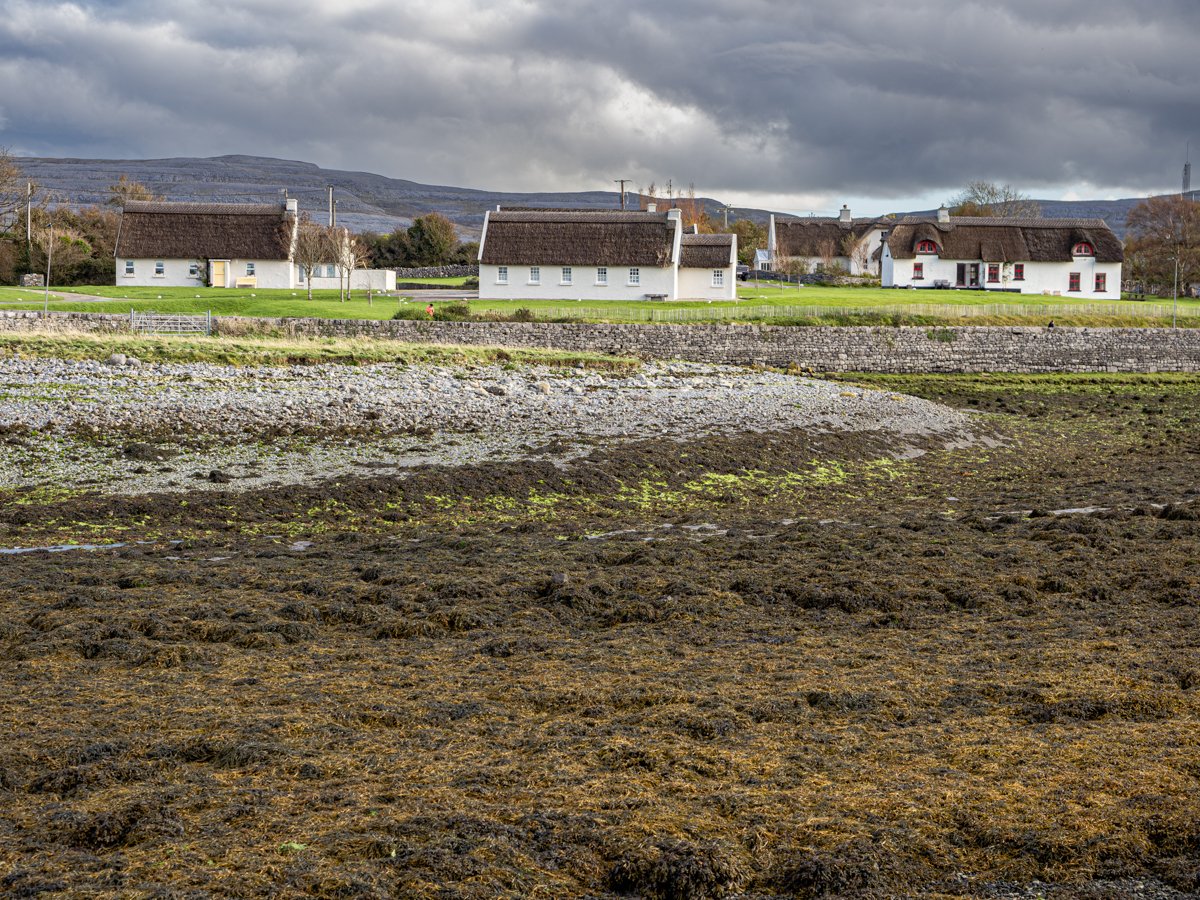Famine Walls of Ireland
A network of crisscrossed walls can be seen in the background, climbing up an Irish hill along a scenic route in county Clare.
In October, I traveled to Ireland to visit my daughter, an MFA candidate at the Burren School of Art. The rugged Burren landscape—defined by its stark geology and stone walls—became the focus of my lens. These famine walls, often built on unfarmable terrain during the Great Famine (1845–1852), stand as quiet monuments to a brutal history. Constructed by the starving for meager relief wages, they traverse hillsides in patterns that speak of endurance and loss. My work aims to preserve these overlooked markers of hardship, revealing the intersection of land, labor, and memory. This image is part of an ongoing visual narrative documenting the enduring legacy of the famine on Ireland's western landscape.
A farm near the outskirts of Dingle, Ireland. Stone walls crisscross along hills and valleys, throughout almost all of the landscape of western Ireland.






Stone walls dating back to the Great Irish Famine (1845–1852), were built by impoverished laborers in exchange for meager sustenance or a penny a day. These walls stretch across nearly all of Irelands western landscape. Criss-crossing the rugged and scenic landscape, marking lands of little arable value yet as enduring symbols of hardship and resilience of Ireland’s past.



